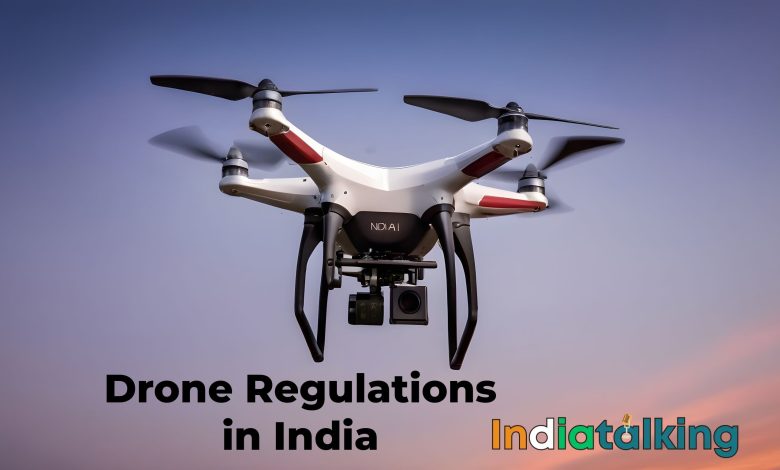Drone Regulations in India
Navigating the Sky: Understanding Drone Regulations in India

The Directorate General of Civil Aviation (DGCA) has been at the forefront of formulating and implementing these regulations. In 2018, the DGCA introduced the Civil Aviation Requirements (CAR) for drones, which classified them into five different categories based on their weight and purpose. The regulations require drone owners to register their devices, obtain a Unique Identification Number (UIN), and adhere to specific operational guidelines, such as maintaining a maximum altitude of 120 meters and flying only during daylight hours. Additionally, the regulations prohibit the use of drones in certain areas, including airports, military installations, and other designated sensitive locations. These regulations aim to strike a balance between promoting the growth of the drone industry and ensuring public safety and security in India.
Based on the regulations and guidelines set forth by the Directorate General of Civil Aviation (DGCA) in India, here are the key rules and requirements for flying drones:
- Registration and Categorization: All drones, except those in the Nano category (weighing less than or equal to 250 grams), must be registered and issued a Unique Identification Number (UIN). Drones are categorized based on weight:
- Nano: Up to 250 grams
- Micro: 250 grams to 2 kilograms
- Small: 2 kilograms to 25 kilograms
- Medium: 25 kilograms to 150 kilograms
- Large: Over 150 kilograms
- Permit for Commercial Operations: Commercial drone operations require a permit, except for Nano category drones flown below 50 feet and Micro category drones flown below 200 feet.
- Visual Line of Sight (VLOS): Drone pilots must maintain direct visual line of sight with their drones at all times while flying.
- Altitude Restrictions: Drones cannot be flown more than 400 feet vertically.
- No Fly Zones: Drones cannot be flown in designated “No Fly Zones,” which include areas near airports, international borders, certain government buildings, military installations, and other strategic locations.
- Controlled Airspace: Permission to fly in controlled airspace can be obtained by filing a flight plan and obtaining a unique Air Defense Clearance (ADC)/Flight Information Center (FIC) number.
- Required Drone Equipment: Except for Nano category drones, all drones must have the following features:
- GPS
- Return-to-Home (RTH) function
- Anti-collision light
- ID plate
- Flight controller with flight data logging capability
- RF ID and SIM/No Permission No Takeoff (NPNT)
- No Permission, No Takeoff (NPNT) Policy: Before every flight, drone pilots must request permission via a mobile app. This system ensures that drones cannot take off without obtaining permission from the Digital Sky Platform. If a pilot attempts to fly without permission, the drone will not be able to take off.
Drone operators are required to register their drones and request permission for each flight through India’s Digital Sky Platform. Further details and the Digital Sky Platform are available on the DGCA website.
For additional information on India’s drone laws, refer to the DGCA website.

These regulations and guidelines set by the DGCA are crucial for ensuring safety and security in the drone industry. It’s great to see that India is taking proactive measures to regulate drone usage and protect the public.
These regulations and requirements for flying drones in India seem to strike a good balance between promoting the drone industry and ensuring public safety. It’s important for drone owners to register their devices and follow the guidelines to avoid any potential risks or legal issues. The No Fly Zones and altitude restrictions are particularly important in sensitive
These regulations and requirements set by the DGCA are essential for ensuring the safe and responsible use of drones in India. It is crucial for drone owners to adhere to these guidelines to protect public safety and security.